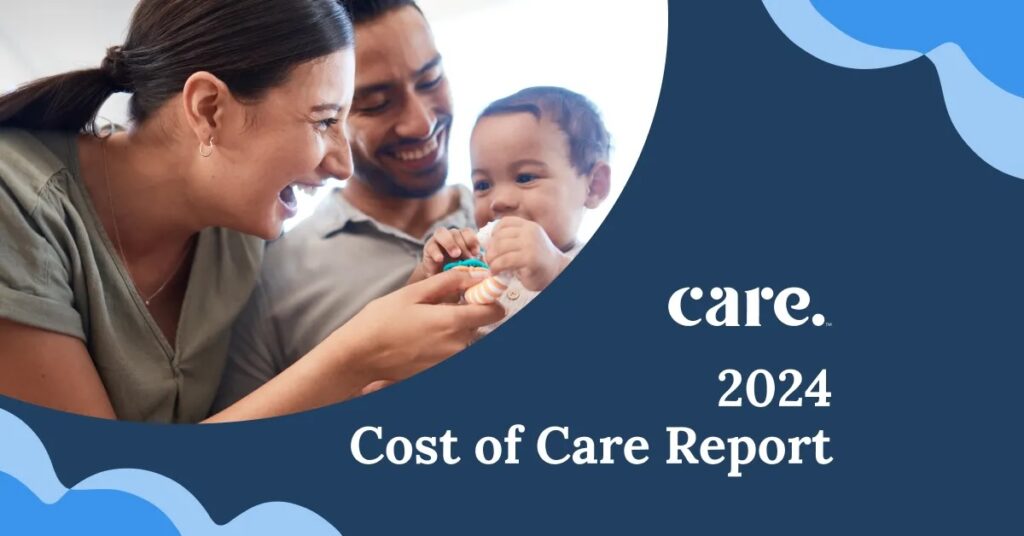The formula for measuring the Return on Investment (ROI) of employee benefits is, on its surface, pretty simple: (Payback – Investment)/ Investment) *100.
But which investments should you count? And, far more vexing, how do you measure “payback?” Employee retention, productivity, and absenteeism are all valid and quantifiable metrics. But the intangible, qualitative factors – employee morale, loyalty, focus, and engagement – drive those concrete numbers.
A survey of 500 Human Resource leaders and C-suite decision-makers, recently conducted by Care.com, reveals that many companies are abandoning the “nice to have” benefits critical to a centralized workforce (such as free lunches and commuter benefits) in favor of benefits that have greater impact on the way we work today and will continue to work tomorrow.
When evaluating the ROI of new/increased benefits in the coming year, our survey respondents generally weigh employee satisfaction/morale and profitability equally when evaluating benefits in general. And 10 months into the pandemic, 33% of our respondents see care benefits as essential, and a similar proportion sees them as offering a competitive advantage. Indeed, 50% believe that the positive impact of child care benefits outweigh the costs.
That conviction becomes apparent when we look at what benefits our respondents plan to expand specifically to boost employee retention. While 66% plan to offer greater work flexibility (a family-friendly benefit with no direct costs to employers), we see that 63% plan to increase their child care benefits and 41% to expand their senior care offerings.
Those who worry that costs outweigh benefits may be taking too narrow or short-term a view. AARP research suggests that some of the most valued and effective benefits – those that offer flexibility in when and where people work – have no cash value. “Overall, the evidence supports the business case for offering such benefits that allow caregivers to balance their jobs with other responsibilities, such as flextime and remote work.”
When we presented HR leaders with a list of the potential positive impact of care benefits, the most frequently selected were:
• Flexibility (65%);
• Improved employee mental health (59%);
• Increased productivity (53%). Among respondents from companies employing more than 2,000 people, a majority selects this as the primary benefit, with an especially high proportion of male respondents choosing this option.
These rankings reflect the fact that providing employees with the flexibility they need to perform their role as caregivers is integral to enhancing their mental health, and that in turn supports their productivity. Having the infrastructure and support needed to care for children and elderly loved ones enables people to be less stressed and thus more focused and productive when they are working.
Our findings have been proven in other research. Multiple studies have created indices of family-friendly policies (such as flex time, telecommuting, unpaid leave, paid sick leave to care for family members, and backup child and elder care), then analyzed their aggregate effect. They found that more generous policies and benefits have:
• Reduced workers’ intention to quit by 5.9% for each additional family benefit offered (such as child care or elder care resources or subsidies, and health insurance for family members)ii ,
• Had a positive impact on companies’ sales and stock price. According to AARP, “A work-family human resources policy announcement is associated with a significant share price increase of 0.32 percent on the day of the announcement. Interestingly, the effect on share price was almost three times as large (0.94 percent) for pioneering firms, i.e., those that were the first in their industry to announce the policy.” Not surprisingly, these policies and benefits have had a larger effect on organizational performance for firms with a greater share of women employees (who are generally the primary caregivers at home), both in terms of sales and stock price.
Ultimately, what’s essential when assessing ROI is to look not just through management’s filter, but through that of your employees. To quote Larry Montan, director of sales force effectiveness with Deloitte in Minneapolis in The Problem with Measuring the ROI of Benefits, “‘It might not scratch the itch’ to demonstrate ROI to the C-suite, but given the intense war for talent, the employee perspective can’t be ignored. ‘Employees vote with their feet.’”
Read the full report here.







